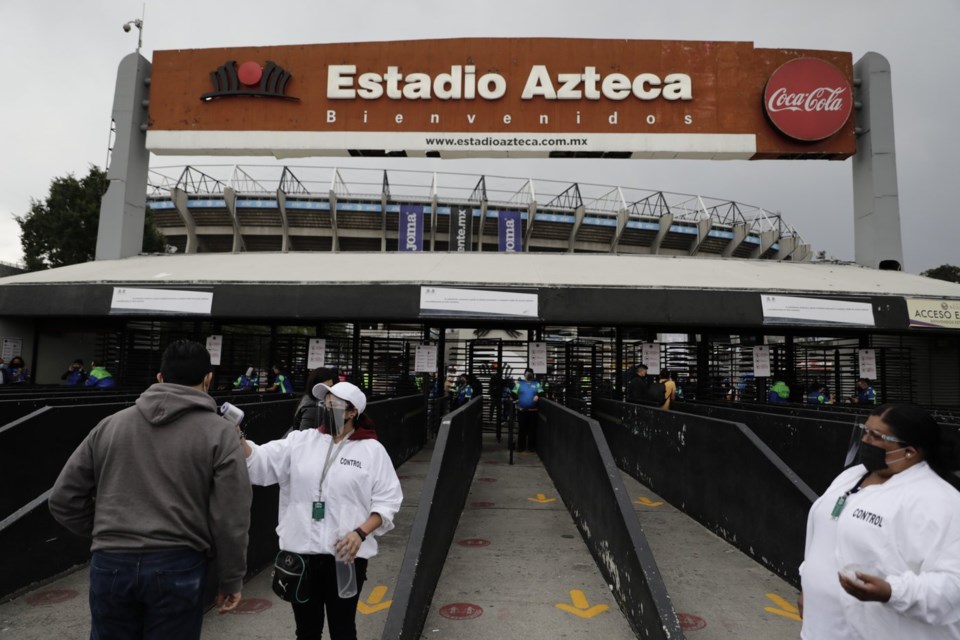MEXICO CITY (AP) — The revamped Azteca Stadium is scheduled to reopen 75 days before the start of the 2026 World Cup with improved services around it, Mexico City mayor Clara Brugada announced on Wednesday.
The iconic venue closed last May for renovations ahead of next year's 48-team competition hosted by Mexico, the United States and Canada.
The 83,000-seat Azteca, which recently was renamed, will host five games including the tournament opener. It also hosted the first matches in the 1971 and 1986 World Cups.
Brugada did not reveal further details regarding the reopening of the stadium on March 28, 2026.
Stadium director Felix Aguirre said they are thinking long term.
“The stadium is moving ahead with its renovations so it can work for the next 40 or 50 years,” he said. “We are respecting its legacy, but we also want to improve the fan experience.”
The stadium owners, a company related to Televisa, Mexico’s largest television network, have released images of work done on the pitch and the lower seats. The luxury boxes apparently haven’t been touched because some owners refuse to release them to FIFA.
Brugada also said that for the 2026 World Cup, they are going to improve a light rail line that heads toward Azteca, will enhance outdoor lighting and a pedestrian bridge around it among other things.
On game days, the Xochimilco Light Rail known as Tren Ligero is one of the fastest ways to reach the stadium, located south of the city, but it currently has 20 trains and the city’s government will purchase 17 more.
“We will have around 40 trains to attend a daily requirement of over 400,000 passengers,” Brugada said.
The current capacity of the trains is 160,000 passengers per day and the ride from Taxqueña station, the closest metro line, to the stadium is around 15 minutes with trains departing every 10 minutes.
Brugada said that with more trains the departures time will be shorter.
The mayor said they will be upgrading the city's video surveillance camera system for the tournament and adding 40,000 to have a total of 123,000.
Mexico City's video surveillance system is called the Command, Control, Computing, Communications, and Citizen contact center known as C5. Besides the cameras, the system has 1,000 panic buttons to enhance public safety.
“The video surveillance system put us in the forefront, we are the most video-monitored city in Latin America,” Brugada said.
Brugada also informed that Los Pinos, which until 2018 was the Mexican president’s official office and residence, will serve as the media center.
___
AP soccer: https://apnews.com/hub/soccer
Carlos Rodriguez, The Associated Press



